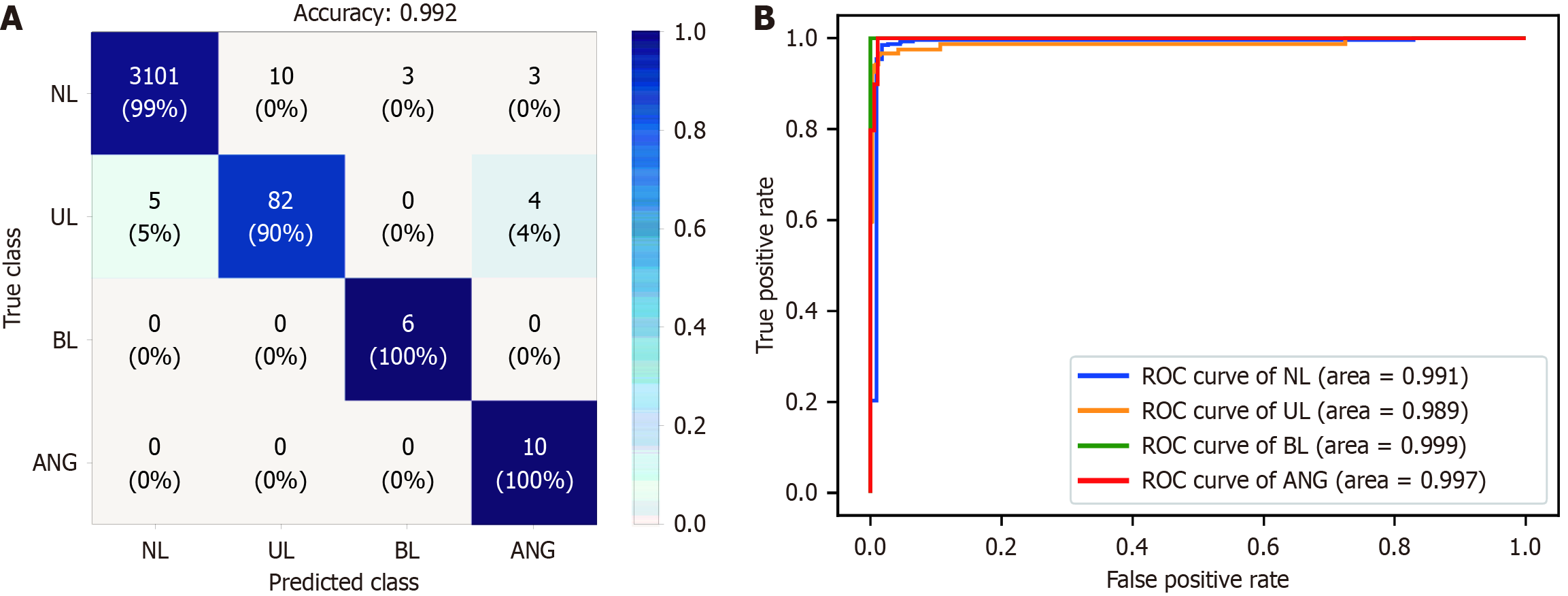Copyright
©The Author(s) 2025.
World J Gastroenterol. Jul 21, 2025; 31(27): 106819
Published online Jul 21, 2025. doi: 10.3748/wjg.v31.i27.106819
Published online Jul 21, 2025. doi: 10.3748/wjg.v31.i27.106819
Figure 2 Performance of the artificial intelligence model for detecting small bowel abnormalities in the internal test dataset.
The model demonstrated high performance in detecting small bowel abnormalities, with an overall accuracy of 0.992 and excellent area-under-the curve scores for all classes. A: Confusion matrix; B: Receiver-operating characteristic curve. NL: Normal mucosa (including debris, bile, and bubbles); BL: Bleeding (active bleeding or visible fresh blood); GT: Ground truth; UL: Erosions/ulcers, ANG: Angiodysplasia; ROC: Receiver-operating characteristic curve.
- Citation: Kwon YS, Park TY, Kim SE, Park Y, Lee JG, Lee SP, Kim KO, Jang HJ, Yang YJ, Cho BJ. Deep learning-based localization and lesion detection in capsule endoscopy for patients with suspected small-bowel bleeding. World J Gastroenterol 2025; 31(27): 106819
- URL: https://www.wjgnet.com/1007-9327/full/v31/i27/106819.htm
- DOI: https://dx.doi.org/10.3748/wjg.v31.i27.106819









